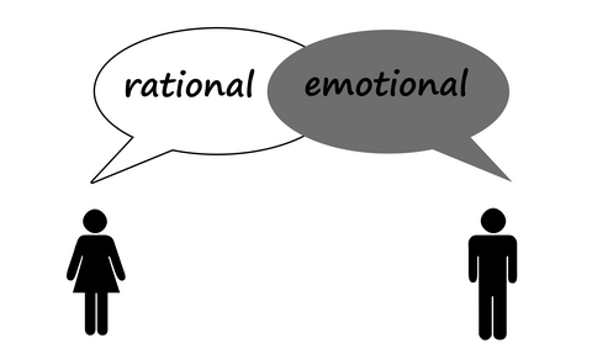Quantifying Gender’s Impact on Communications

There is no shortage of commentary and research telling us that men and women communicate differently. We have enjoyed reading some of the data-driven studies that examine the amount of time men speak relative to women (some studies claim that women say 3 times more words daily, others say there is no difference between men and women), as well as some of the more qualitative research that articulates the psychological needs that drive these differences. Even with the abundance of existing research, however, we still had an unanswered question – can you quantify communicational differences between the genders?
The answer is yes. By leveraging our database of over 100,000 communication samples, we analyzed the language of men and compared it to the language of women. To help with our analysis, we first turned to academic research. In a study published in the Annual Review of Psychology, researchers found that men are more precise and less emotional in their communication and that they tend to reference numbers more often. They also found that female communication is more emotional, includes more references to uncertainty, uses more negations and more first person pronouns.
To substantiate this research, we queried our database for public speaking events by both men and women. Accordingly, we set out to measure the use of “emotion” words, pronouns and references to uncertainty; furthermore, we looked at the number of words used, questions asked, and the grade level of the content.
It’s worth noting that our database is comprised largely of corporate, organizational and executive content. For this reason, many forms of the content we examined were scripted by a corporate team, such as an investor relations team or corporate communications team, which could potentially remove some of the conditions of authenticity in which these gender differences would naturally emerge. To control for this, we decided to narrow our dataset to a more specific context that would include less “sanitized” public speeches in which speakers likely wrote their own content.
After running the analytics, here is what we discovered:
From these results we learned that past assumptions about how men and women communicate differently do not hold true in a public speaking setting.
We can forget the conventional wisdom about Venus and Mars. We found only one significant difference in how men and women communicate, and it will surprise you: Women speak to their audiences more directly.
Women use significantly more second person pronouns than men. This means that women are talking to their audiences in a more direct way. They are making references to the needs of the audience more often than men: “I want you to join this coalition because it benefits you directly” or “Think about adding solar panels to your house – imagine a world in which you no longer have to pay a high electricity bill.”
Effective public speakers strive to address their audience’s desires and goals in their communication. We’ve found that this is the most effective way to capture their attention and keep them focused throughout the speech or presentation.
As communicators, we can all learn from these findings. The next time you prepare a presentation, no matter your gender, think hard about how you can incorporate your audience into your message. How can you address them, call them to action, reference their desires? Put yourself in the shoes of your audience and think about how those second person pronouns would affect you.
